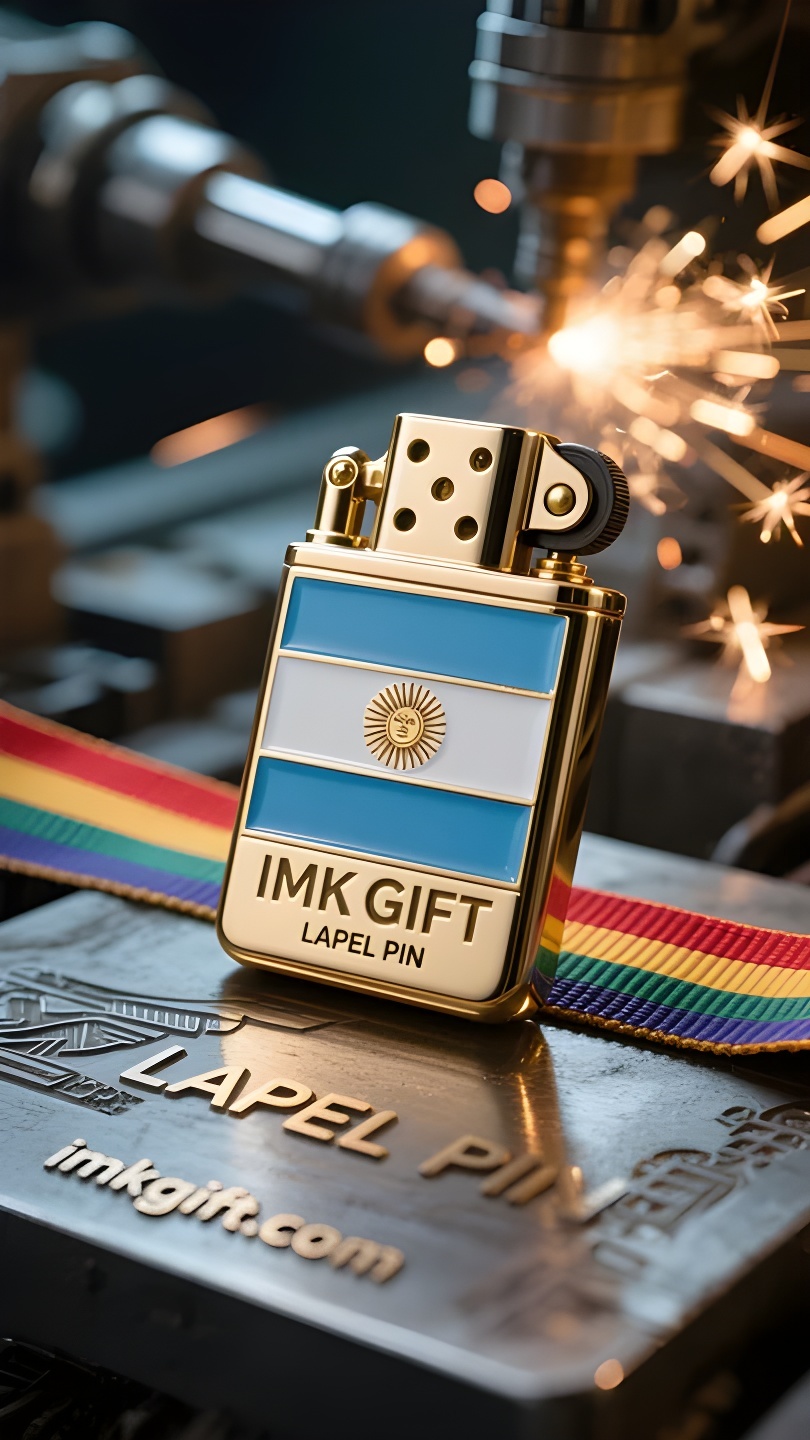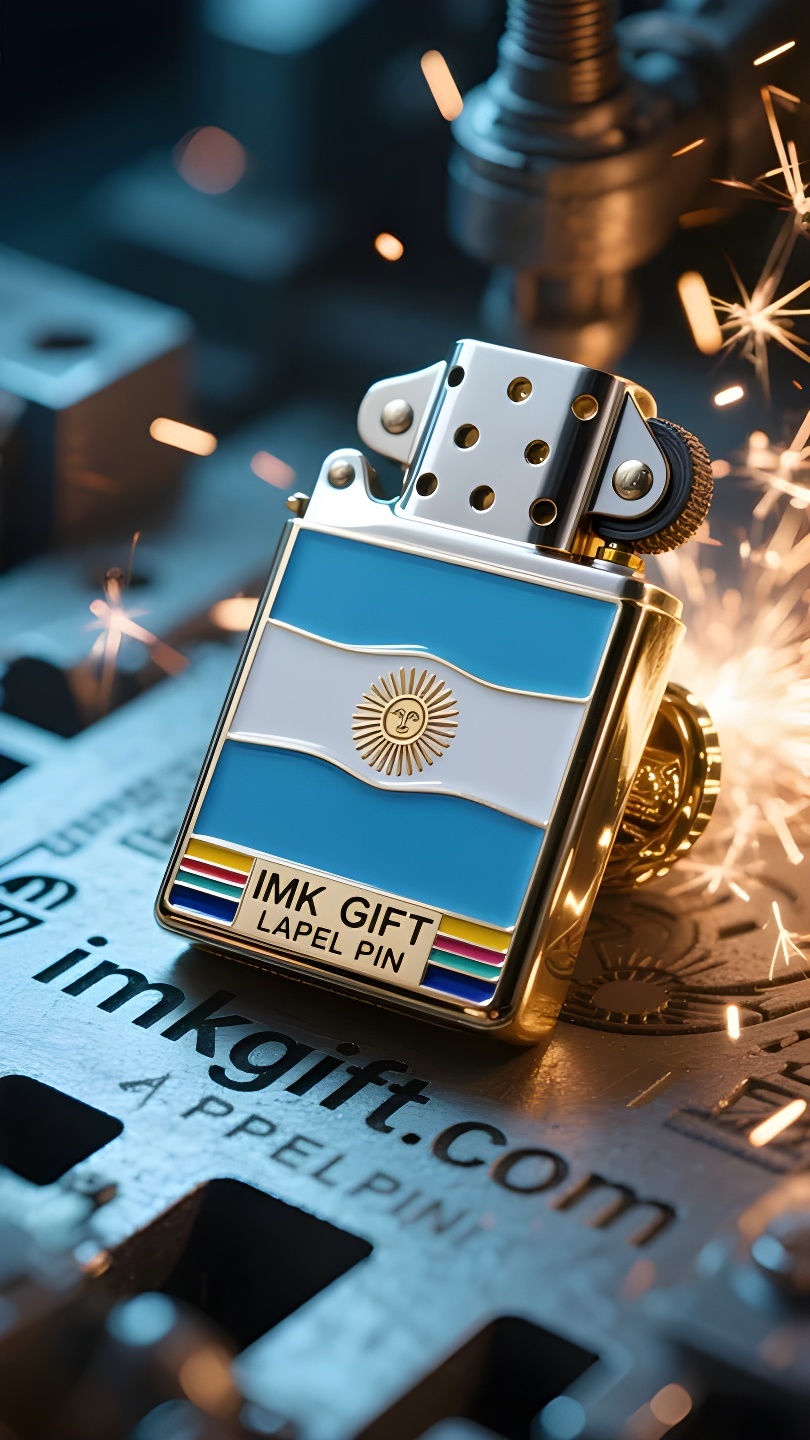in981-El-fuego-no-se-apaga-la-luz-del-corazón-arde-para-siempre
▼
Bajo el cielo azul y las nubes blancas de Argentina, el celeste y el blanco puro de la bandera nacional no sólo son un reflejo de los colores de la naturaleza, sino también un símbolo de libertad y verdad. El “Sol de Mayo” en el centro del emblema nacional es como una llama eternamente ardiente que ilumina el tótem espiritual de esta nación. Al igual que un encendedor grabado con el emblema nacional, cuando los engranajes de metal crean chispas, lo que estalla no es sólo fuego físico, sino también el fuego nacional transmitido de generación en generación. Cuando el general Manuel Belgrano izó la primera bandera azul y blanca a orillas del río Paraná en 1812, fue como encender una antorcha espiritual. Esta llama ha perdurado durante dos siglos y continúa en las espigas de trigo y en los patrones de apretón de manos del emblema nacional: la llama de la unidad puede derretir cualquier invierno frío, así como un encendedor necesita un suministro continuo de oxígeno para seguir encendido. Hoy, los argentinos siguen transmitiendo esa llama: los maestros de barrios marginales encienden con su conocimiento los ojos de los niños, los atletas de rugby encienden con su sudor la sangre de sus compatriotas y los bailarines de tango encienden con los dedos de sus pies el latido de la ciudad. La llama de un encendedor se puede extinguir temporalmente, pero el líquido inflamable siempre está contenido dentro del encendedor. Ésta es exactamente la esencia del espíritu nacional argentino: incluso en medio de turbulencias económicas y cambios sociales, la gorra de la libertad en el emblema nacional siempre ondea en alto, como la piedra de un encendedor listo para funcionar, esperando la siguiente fricción para reavivar la esperanza. Cuando cada ciudadano se convierta en una llama andante, la luz de este país nunca se apagará.
Under the blue sky and white clouds of Argentina, the light blue and pure white of the national flag are not only a reflection of the colors of nature, but also a symbol of freedom and truth. The “May Sun” in the center of the national emblem is like a flame that burns forever, illuminating the spiritual totem of this nation. Just like a lighter engraved with the national emblem, when the metal gears rub against each other, what bursts out is not only physical fire, but also the national fire passed down from generation to generation. When General Manuel Belgrano raised the first blue and white flag on the banks of the Paraná River in 1812, it was like lighting a spiritual torch. This cluster of flames has passed through two centuries and continued in the wheat ears and handshake patterns of the national emblem – the flame of unity can melt any cold winter, just as a lighter needs a continuous supply of oxygen to keep burning. Today’s Argentines are still passing on this cluster of fire: slum teachers use knowledge to ignite children’s eyes, athletes on the rugby field use sweat to ignite the blood of compatriots, and tango dancers use their toes to ignite the heartbeat of the city. The flame of a lighter can be extinguished temporarily, but the inner tank always contains flammable liquid. This is just like the essence of the Argentine national spirit: even through economic turmoil and social change, the cap of freedom on the national emblem always remains high, just like the flint of a lighter ready to go, waiting for the next friction to rekindle hope. When every citizen becomes a walking fire, the light of this country will never dim.
在阿根廷的蓝天与白云下,国旗的浅蓝与纯白不仅是自然之色的映射,更是自由与真理的象征。而国徽中央的”五月太阳”,则如一团永恒燃烧的火焰,照耀着这个民族的精神图腾。恰如一枚刻着国徽图案的打火机,当金属齿轮擦出火星的刹那,迸发的不仅是物理之火,更是代代相传的民族心火。
1812年曼努埃尔·贝尔格拉诺将军在巴拉那河畔升起第一面蓝白旗时,就像划亮了一支精神火炬。这簇火苗穿越两个世纪,在国徽的麦穗与握手图案中延续——团结的火焰能熔解任何寒冬,正如打火机需要持续供氧才能保持燃烧。今天的阿根廷人依然在传递这簇火种:贫民窟教师用知识点燃孩子的眼睛,橄榄球场上的健儿用汗水点燃同胞的热血,探戈舞者用足尖点燃城市的心跳。
打火机的火焰可以暂时熄灭,但内胆里永远蓄着可燃的液体。这恰似阿根廷民族精神的本质:即便经历经济动荡、社会变革,国徽上的自由之帽始终昂扬,就像打火机蓄势待发的火石,等待下一次摩擦就能重燃希望。当每个公民成为行走的火种,这个国家的光芒便永不黯淡。
▼
Contact Us
📞 Tel: +0086-760-85286839
📧 Email: sales3@imkgift.com








